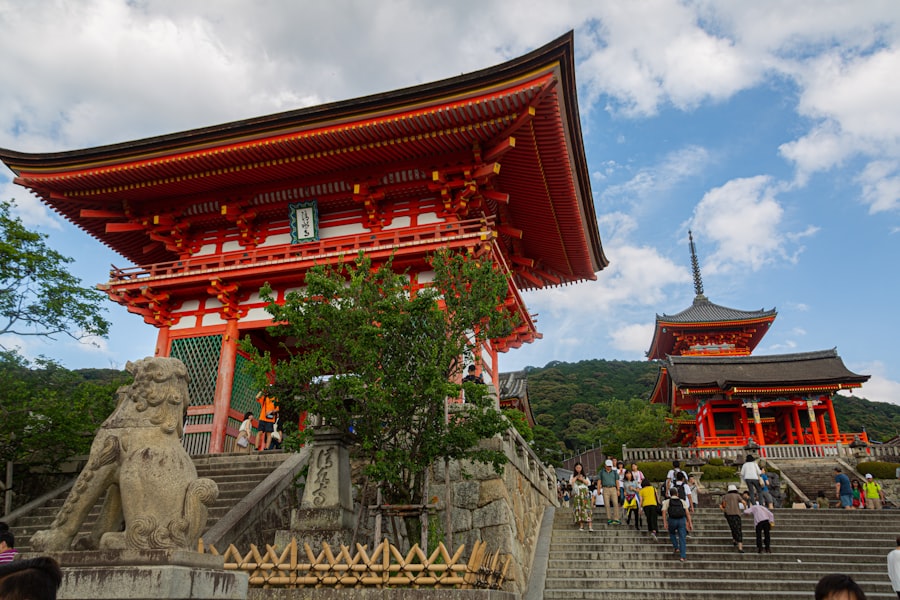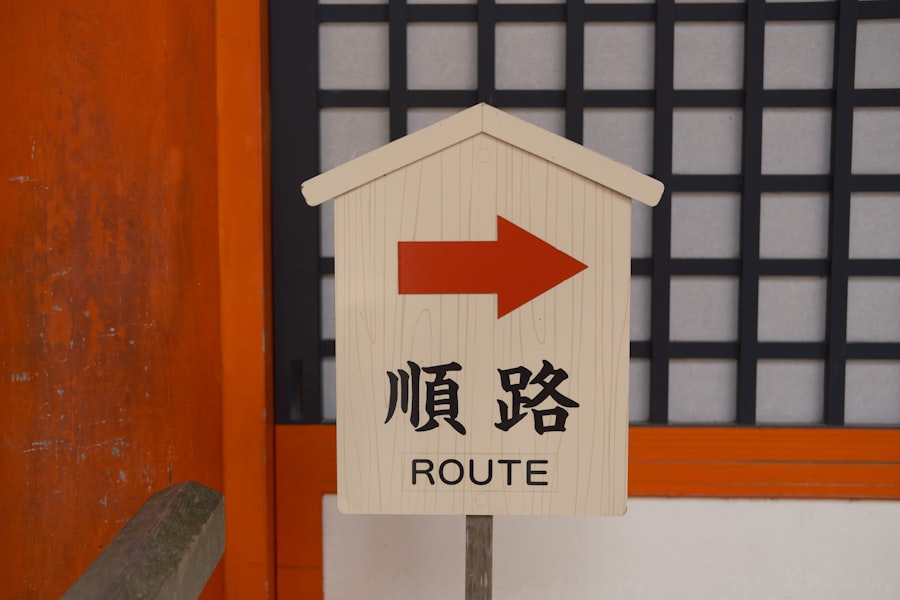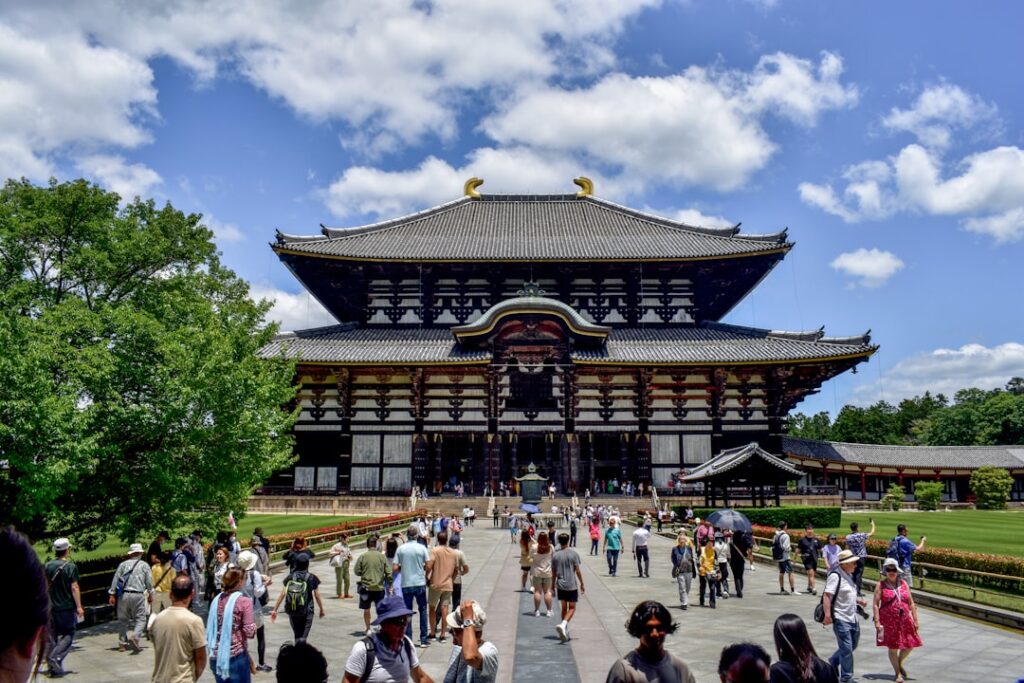The DK Eyewitness Travel Guide to Japan serves as an essential companion for anyone looking to explore the Land of the Rising Sun. Renowned for its rich tapestry of history, culture, and modernity, Japan offers a unique blend of ancient traditions and cutting-edge technology. This guide is meticulously crafted to provide travelers with a comprehensive understanding of the country’s diverse offerings, from its bustling urban centers to serene rural landscapes.
With detailed maps, stunning photography, and insightful commentary, the guide aims to inspire and inform, ensuring that visitors can navigate their journey with confidence and curiosity. Japan is a land of contrasts, where the past coexists harmoniously with the present. The DK Eyewitness Travel Guide delves into the nuances of Japanese culture, highlighting not only the iconic landmarks but also the subtler aspects that define the nation.
From the tranquil beauty of cherry blossoms in spring to the vibrant energy of Tokyo’s neon-lit streets, this guide captures the essence of Japan in all its multifaceted glory. Whether you are a first-time visitor or a seasoned traveler returning to explore new horizons, this guide provides invaluable insights that enhance your experience.
Key Takeaways
- The DK Eyewitness Travel Guide Japan provides comprehensive information for travelers looking to explore the diverse and rich culture of Japan.
- Japan’s regions and cities offer a wide range of experiences, from the bustling metropolis of Tokyo to the serene landscapes of Hokkaido and Okinawa.
- Gain detailed cultural and historical insights into Japan’s traditions, festivals, and historical landmarks, providing a deeper understanding of the country’s heritage.
- Practical information for travelers includes essential tips on visas, currency, transportation, and communication to help visitors navigate Japan with ease.
- Discover the top attractions and must-see sights in Japan, from iconic landmarks like Mount Fuji and Kyoto’s temples to hidden gems off the beaten path.
Overview of Japan’s Regions and Cities
Japan is divided into several distinct regions, each with its own unique character and attractions. The four main islands—Honshu, Hokkaido, Kyushu, and Shikoku—each offer a variety of experiences that reflect the diversity of the country. Honshu, the largest island, is home to major cities such as Tokyo, Kyoto, and Osaka.
Tokyo, the bustling capital, is a metropolis that seamlessly blends tradition with modernity. Visitors can explore historic temples like Senso-ji in Asakusa while also indulging in the latest trends in fashion and technology in districts like Shibuya and Harajuku. Hokkaido, located in the north, is known for its stunning natural landscapes and outdoor activities.
The region is famous for its ski resorts in winter and beautiful flower fields in summer. Cities like Sapporo offer a taste of local culture through their renowned beer and annual snow festival. In contrast, Kyushu, situated in the southwest, boasts hot springs and volcanic landscapes.
The city of Fukuoka is a culinary hub, famous for its ramen and street food culture. Each region presents a unique perspective on Japanese life, making it essential for travelers to explore beyond just the well-trodden paths.
Detailed Cultural and Historical Insights

Japan’s cultural heritage is deeply rooted in its history, which spans thousands of years. The influence of Shintoism and Buddhism can be seen in various aspects of daily life, from festivals to architecture. Traditional practices such as tea ceremonies and calligraphy reflect a profound appreciation for aesthetics and mindfulness.
The DK Eyewitness Travel Guide provides insights into these cultural practices, offering travelers a deeper understanding of their significance. For instance, participating in a tea ceremony not only allows visitors to taste matcha but also immerses them in a ritual that emphasizes harmony and respect. Historical landmarks play a crucial role in narrating Japan’s story.
The guide highlights significant sites such as Kyoto’s Kinkaku-ji (Golden Pavilion) and Hiroshima’s Peace Memorial Park. Kinkaku-ji, with its stunning gold leaf exterior surrounded by serene gardens, represents the zenith of Muromachi period architecture. Meanwhile, Hiroshima’s Peace Memorial Park serves as a poignant reminder of the devastation caused by World War II and stands as a symbol of hope for peace.
By exploring these sites, travelers can gain insight into Japan’s resilience and cultural evolution over centuries.
Practical Information for Travelers
Traveling in Japan requires some preparation to ensure a smooth experience. The DK Eyewitness Travel Guide offers practical information on essential aspects such as visa requirements, currency exchange, and local customs. Most travelers can enter Japan without a visa for short stays; however, it is advisable to check specific requirements based on nationality.
The Japanese yen (JPY) is the official currency, and while credit cards are widely accepted in urban areas, cash remains king in rural regions and smaller establishments. Understanding local customs is equally important for travelers seeking to immerse themselves in Japanese culture. For example, bowing is a common form of greeting that signifies respect.
Additionally, it is customary to remove shoes when entering homes or certain traditional establishments like ryokan (inns). The guide emphasizes these cultural nuances to help visitors navigate social interactions with ease. Furthermore, it provides tips on etiquette when dining out or visiting shrines and temples, ensuring that travelers can engage respectfully with local traditions.
Top Attractions and Must-See Sights
Japan is replete with attractions that cater to diverse interests. The DK Eyewitness Travel Guide meticulously outlines must-see sights across various cities. In Tokyo, the iconic Tokyo Tower offers panoramic views of the sprawling metropolis, while the historic Meiji Shrine provides a tranquil escape from the urban hustle.
For those venturing to Kyoto, the Fushimi Inari Taisha shrine is an unmissable sight with its thousands of vermilion torii gates winding up Mount Inari. In addition to these well-known landmarks, the guide also highlights lesser-known attractions that deserve attention. For instance, Nara Park is home to free-roaming deer and significant historical sites like Todai-ji Temple, which houses a giant Buddha statue.
Similarly, the picturesque village of Shirakawa-go showcases traditional gassho-zukuri farmhouses set against a backdrop of stunning mountain scenery. These attractions not only provide visual splendor but also offer insights into Japan’s cultural heritage.
Unique Experiences and Hidden Gems

Beyond the typical tourist attractions lie unique experiences that allow travelers to connect more deeply with Japan’s culture and people.
For example, participating in a local festival can provide an authentic glimpse into community life.
Events like Gion Matsuri in Kyoto or Nebuta Matsuri in Aomori showcase vibrant parades filled with traditional music, dance, and elaborate floats. Another unique experience highlighted in the guide is staying at a ryokan—a traditional Japanese inn where guests can enjoy tatami-matted rooms and kaiseki meals made from seasonal ingredients. This immersive experience allows travelers to appreciate Japanese hospitality (omotenashi) while enjoying serene surroundings often accompanied by onsen (hot springs).
Additionally, exploring rural areas such as the Ouchi-juku post town offers a chance to witness traditional thatched-roof houses and experience local crafts like soba noodle making.
Accommodation, Dining, and Entertainment Recommendations
When it comes to accommodation options in Japan, travelers are spoiled for choice—from luxury hotels to budget hostels and traditional ryokan. The DK Eyewitness Travel Guide provides recommendations tailored to various preferences and budgets.
For those seeking an authentic experience, staying at a ryokan can be particularly rewarding. Dining in Japan is an adventure in itself, with an array of culinary delights waiting to be discovered. The guide emphasizes regional specialties such as Hiroshima-style okonomiyaki (savory pancakes) or Hokkaido’s fresh seafood offerings.
Street food markets are also highlighted as must-visit spots where travelers can sample local delicacies like takoyaki (octopus balls) or yakitori (grilled chicken skewers). Furthermore, izakayas—Japanese pubs—provide an informal setting for enjoying drinks and small plates while mingling with locals. Entertainment options abound in Japan’s vibrant cities.
From sumo wrestling matches to kabuki theater performances, there are numerous ways to experience traditional arts. The guide suggests attending a sumo tournament for an exhilarating glimpse into this ancient sport or visiting a theater district like Tokyo’s Ginza for kabuki shows that showcase elaborate costumes and storytelling through dance. These experiences not only entertain but also deepen one’s appreciation for Japan’s rich cultural heritage.
Tips for Navigating Japan’s Transportation System
Japan boasts one of the most efficient transportation systems in the world, making it relatively easy for travelers to navigate even the most remote areas. The DK Eyewitness Travel Guide provides essential tips on utilizing public transport effectively. The Shinkansen (bullet train) is perhaps the most iconic aspect of Japan’s transportation network; it connects major cities at remarkable speeds while offering breathtaking views of the countryside.
Purchasing a Japan Rail Pass can be advantageous for those planning extensive travel across regions; it allows unlimited travel on JR trains for a set period at a cost-effective rate. Additionally, local trains and subways are well-marked in English, making them accessible even for non-Japanese speakers. The guide also emphasizes the importance of punctuality—trains are known for their timeliness—and suggests downloading navigation apps that provide real-time updates on schedules.
For those venturing off the beaten path, buses can be an excellent alternative for reaching rural destinations not serviced by trains. While bus schedules may be less frequent than trains, they often offer scenic routes through picturesque landscapes. Travelers are encouraged to familiarize themselves with local bus systems and consider purchasing prepaid IC cards like Suica or Pasmo for seamless travel across various modes of transport without needing cash for each ride.
In summary, navigating Japan’s transportation system can enhance your travel experience significantly when approached with some knowledge and preparation. With insights from the DK Eyewitness Travel Guide at hand, visitors can confidently explore this captivating country while enjoying all it has to offer—from its rich history to its vibrant modern culture.
If you’re planning a trip to Japan and have found the DK Eyewitness Travel Guide Japan by DK Eyewitness to be an invaluable resource, you might also be interested in exploring additional travel insights and tips. A related article that could enhance your travel planning is available on Hellread. This article provides a broader perspective on travel experiences and might offer unique insights that complement the detailed information found in the DK Eyewitness guide. You can read more about it by visiting this article on Hellread.
FAQs
What is the DK Eyewitness Travel Guide Japan by DK Eyewitness?
The DK Eyewitness Travel Guide Japan is a comprehensive travel guidebook that provides detailed information about Japan’s history, culture, attractions, and practical travel tips for visitors.
What type of information does the DK Eyewitness Travel Guide Japan provide?
The guidebook provides information on Japan’s major cities, regions, and attractions, as well as practical advice on transportation, accommodations, dining, and cultural etiquette.
Is the DK Eyewitness Travel Guide Japan suitable for first-time visitors to Japan?
Yes, the guidebook is suitable for first-time visitors as it provides a wealth of information on Japan’s must-see attractions, cultural experiences, and practical travel tips.
Does the DK Eyewitness Travel Guide Japan include maps and illustrations?
Yes, the guidebook includes detailed maps, illustrations, and photographs to help readers navigate Japan’s cities and attractions.
Is the DK Eyewitness Travel Guide Japan available in multiple languages?
Yes, the guidebook is available in multiple languages to cater to a diverse range of international travelers.







